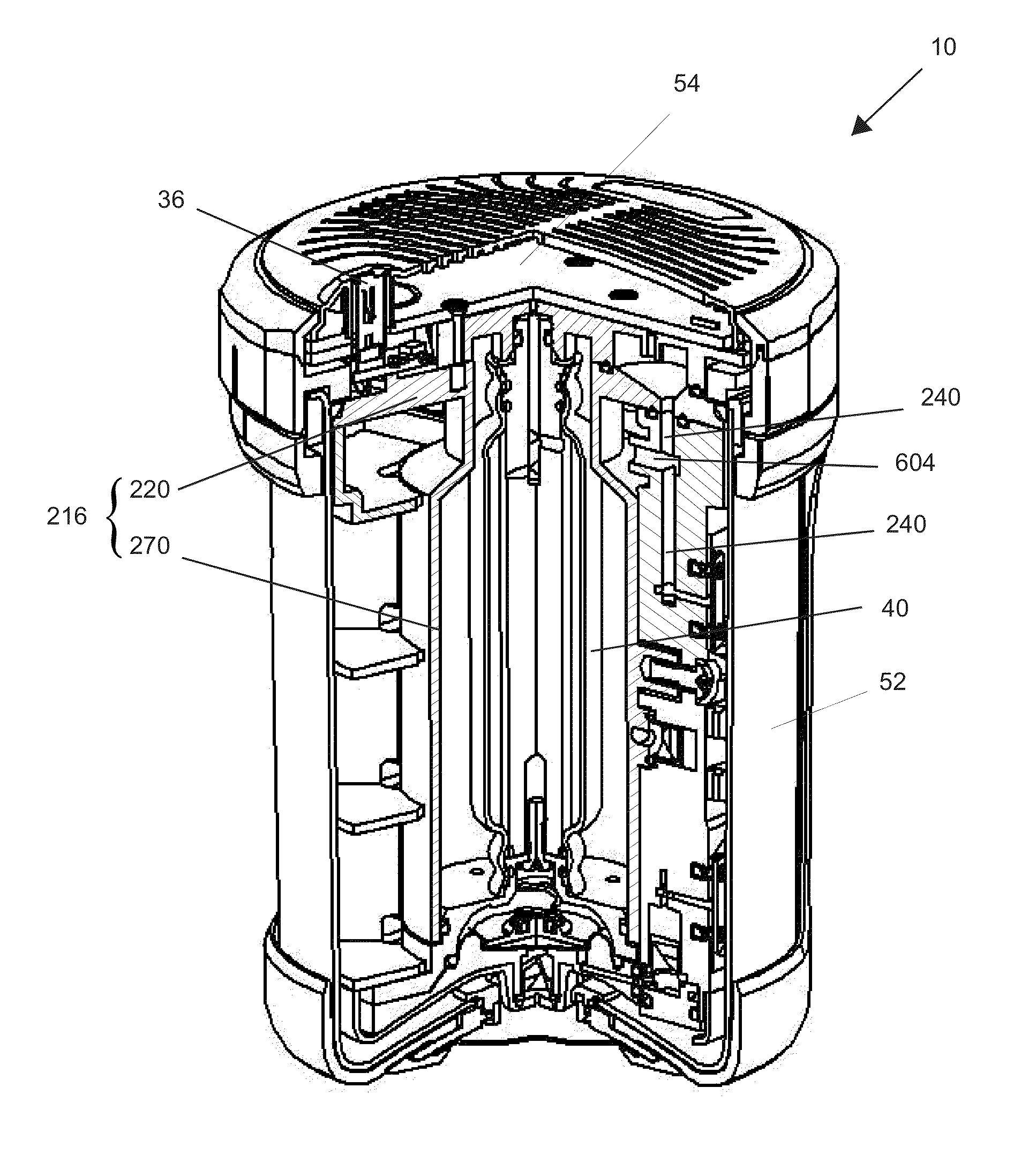Fuel Cell System
a fuel cell and system technology, applied in the field of fuel cell systems, can solve problems such as non-pure hydrogen fuel consumption
- Summary
- Abstract
- Description
- Claims
- Application Information
AI Technical Summary
Benefits of technology
Problems solved by technology
Method used
Image
Examples
example 1
[0155]
MaterialsPurityParticle SizesMagnesium99%between 40 to 100 mesh(422 microns to 152 micron holes)Iron98%Diameter (microns)4 ≦ 10%10 90% ≦ 45Silicon 98%325 mesh (44 micron holes)
In one preferred embodiment, magnesium particles are first sifted through the coarser mesh, e.g., 40 mesh, to remove the larger particles, and then sifted through the finer mesh, e.g., 100 mesh, to remove the smaller particles leaving behind particles in the range between the holes in the coarser mesh and the holes in the finer mesh. Solid fuels were prepared from 100 parts Mg, 25 parts Fe and 15 parts Si by weight. This mixture was milled in an Attritor mill using ⅜ inch carbon steel sphere grinding media. The milling step was conducted in a nitrogen atmosphere for 15 minutes with a 15 minutes discharge. The milling temperature was less than 38° C. (100° F.) and the nominal particle size is about 110 microns. The resulting particles are hybrid or composite particles of magnesium covered by a fine disper...
example 2
Compositional Affects on Flammability
[0190]FIG. 15 illustrates a bar graph comparing burn rates of some embodiments of the invention. Fuel pellets of the invention were created using various compositions as well as varying amounts of pressure during the pressing process, as indicated along the X-axis. For example, the first composition (furthest to the left on the X-axis) contained 9 parts of a first homogeneous mixture to 1 part secondary material (sodium chloride) and was press formed using a compressive force of thirty thousand pounds. The term “FB500” refers to FIREBRAKE 500, a commercial chemical composition used as a fire retardant material available from U.S. Borax, Inc. of Greenwood Village, Colo. “Blend 1,”“Blend 2,” and “Blend 3” refers to comparable fuel material blends, using magnesium powder. More specifically, Blend 1 comprises magnesium particles in the range of about 175 to about 300 microns, and Blend 2 comprises magnesium particles in the range of about 175 to abou...
example 3
Forming Pellets from Exemplary Chemical Hydride
[0194]A sample fuel pellet was formed comprising calcium hydride and optional silicon. Calcium hydride powder and silicon powder were combined in a turbular mixer in a ratio of about 1 part calcium hydride to 0.28 parts silicon (by weight). The calcium hydride powder was fine enough to pass through a 2 millimeter sieve. The silicon powder had a mesh size of about 325 and a purity of at least 98%. The mixing time was about 30 minutes, the mixing batch size was about 366 grams, and the mixing was conducted at about room temperature. After mixing was complete, the resulting second mixture was pressed into pellets weighing about 2.25 grams using about 35,000 pounds force of pressure. The pellets had a diameter of about 6.6 millimeters.
[0195]In another embodiment of the present invention, solid precursor 18 can be suspended in a suspension agent and formed into slurries or gels and the like. The suspension agent can act as a protective coati...
PUM
 Login to View More
Login to View More Abstract
Description
Claims
Application Information
 Login to View More
Login to View More - R&D Engineer
- R&D Manager
- IP Professional
- Industry Leading Data Capabilities
- Powerful AI technology
- Patent DNA Extraction
Browse by: Latest US Patents, China's latest patents, Technical Efficacy Thesaurus, Application Domain, Technology Topic, Popular Technical Reports.
© 2024 PatSnap. All rights reserved.Legal|Privacy policy|Modern Slavery Act Transparency Statement|Sitemap|About US| Contact US: help@patsnap.com










